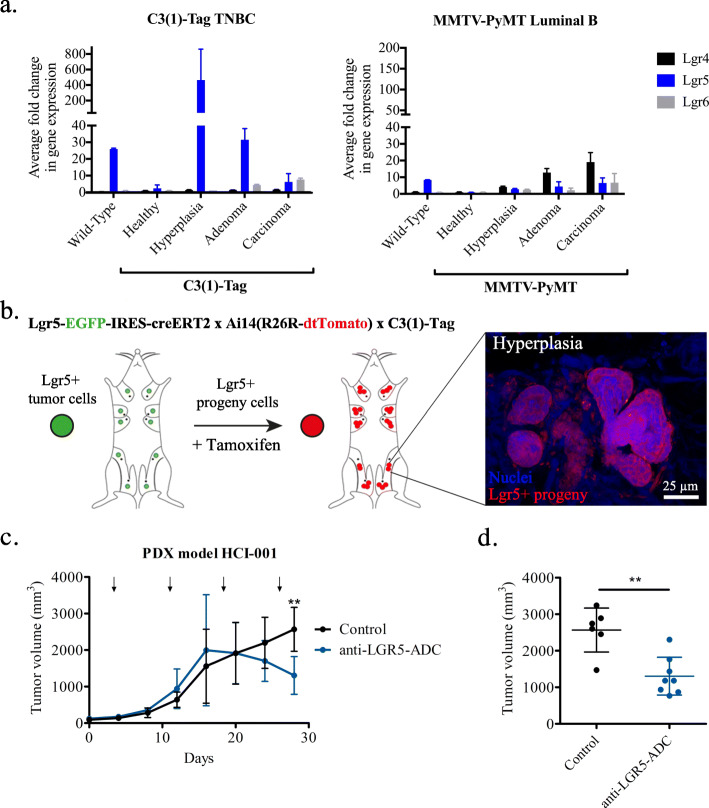Fig. 5.
Targeting LGR5+ cells in ER− BC due to their tumor-initiating capacity. a Quantitative polymerase chain reaction for gene expression analysis of Lgr4, Lgr5, and Lgr6 in the C3(1)-Tag TNBC spontaneous BC mouse model and MMTV-PyMT Luminal B spontaneous BC mouse model. C3(1)-Tag mice have a greater fold-change in Lgr5 gene expression at hyperplasia as compared to other tumorigenic stages and also ~ 20-fold greater Lgr5 expression level as compared to MMTV-PyMT hyperplasic foci. No major differences denoted in either Lgr4 or Lgr6 across tumorigenic stages and BC subtypes. (n = 1 with 3 replicates for WT, all C3(1)-Tag, and healthy MMTV-PyMT; n = 2 MMTV-PyMT for Lgr4, Lgr6, and Lgr5 carcinoma, n = 4 MMTV-PyMT for Lgr5 hyperplasia and adenoma) b Tamoxifen (Tam)-induced Cre recombinase knocked into the Lgr5 locus, Lgr5-EGFP-IRES-creERT2 crossed to Tomato reporter mice, Ai14(R26R dtTomato) indicated Lgr5+ cell progeny in hyperplasias (whole mounts, 1-week Tam treatment, 3 times/week) of the C3(1) Tag mouse model of TNBC. c Tumor volumes during treatment of LGR5-expressing TNBC PDX model mice over 4-weeks with anti-LGR5 (hu8E11v2)-MC-vc-PAB-MMAE (anti-LGR5-ADC, n = 8) and anti-gD-MC-vc-PAB-MMAE (Control n = 6). Arrow indicate administration of antibodies. d Tumor volumes of control mice and mice 4 weeks post treatment with anti-LGR5-ADC shows statistically significant decrease in overall tumor volume following inhibition of LGR5. Mean ± SD. (Student t-test, **P < 0.01)

